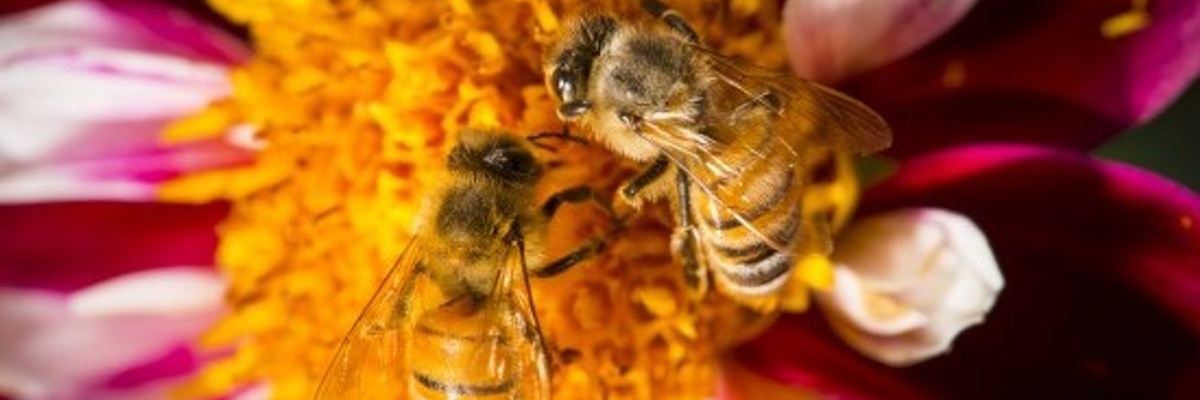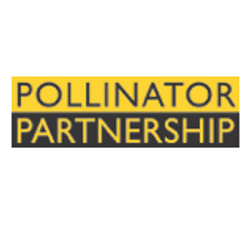

Whether you are a farmer of many acres, land manager of a large tract of land, or a gardener with a small lot, you can increase the number of pollinators in your area by making conscious choices to include plants that provide essential habitat for bees, butterflies, moths, beetles, hummingbirds, and other pollinators. Happy planting!
Whether you are a farmer of many acres, land manager of a large tract of land, or a gardener with a small lot, you can increase the number of pollinators in your area by making conscious choices to include plants that provide essential habitat for bees, butterflies, moths, beetles, hummingbirds, and other pollinators. Happy planting!
Let's give a shout out to agastache Blue Fortune! This fine cultivar of agastache foeniculum will grace our garden with thick, bottlebrush spikes of dusty blue from June until fall. The four inch flower spikes are stout enough to support bees of all sizes. It's interesting to watch a pollinator garden: when given multiple choices, bees show clear preferences. Agastache is a huge bee magnet.
Native to the US Midwest and Great Plains, a. foeniculum struggles in heavy clay soils. Blue Fortune shows much better winter survival here than the species. Still, plant it in your driest, warmest full sun location and do not cut back the stems until mid spring. This is a "spring clean-up" plant. When you visit the nursery, you will be tempted by many different agastaches: dark blue, purple, pink, red and orange hybrids have been developed. Beware: most do not over winter in Virginia. Blue Fortune and Honeybee Blue are the ones you want. Blue Fortune is a larger plant and the flowers are sterile (no self-seeding). Honeybee Blue is a bit shorter with smaller flower heads and reseeds to form a patch.

I stopped by the library today to drain the rain barrel. Last week's thunderstorm had filled the barrel. Rain from the roof of the library building which would otherwise run off into the parking lot is collected in a barrel under the downspout near the book return. The contents of the barrel is just enough to give our pollinator garden a good soaking. Thus the effect of each thunderstorm is doubled. Our pollinator plants will be drought resistant in future years but this is their first year so they need a little help.
Despite temperatures in the mid nineties, the garden looks great. There is no sign of heat stress. All the plants are in bloom now except the vernonia Iron Butterfly. The vernonia will bloom from mid August until late September to continue feeding our bees as the summer bloomers fade. Nurseries sell spring and summer blooming plants in spring while fall bloomers are typically sold after Labor Day. Thus our spring planted garden primarily contains spring and summer bloomers. Ursula searched for October Skies aster in April to no avail. Today I imagined replacing the marigolds with asters this fall. The asters will bloom from September until Thanksgiving. Frost? No problem, October Skies will shrug off frost and keep on blooming. When bees come out to forage on November afternoons, clear blue daisy shaped flowers will be waiting for them.
Speaking of bees, there were bees aplenty in the garden today. I saw three different kinds of bees. Bumbles are my favorite but the teeny guys are pretty darn cute. It's neat to observe them up close.




We finished the path today, thanks to George! We appreciate all the hard work and team work our library staff has contributed to this project. As word spreads, we are seeing library users visiting the garden as well as our pollinator friends. Over the next few weeks, we will purchase signage to help our library users identify the plants in our garden.




Can't wait to stop by!
Thank you George! That's beautiful!
Path is ready for the gravel! So many lovely butterflies are visiting the garden. We even had our first hummingbird checking out the flowers. I wasn't fast enough to get a picture of the hummingbird though.


Nokesville Library ran a very successful Grow-Your-Own Pollinator program for children to learn about pollinators. We distributed more than 25 kits that included a book, a flower pot, soil and zinnia seeds.

On our Facebook page!

So many buzzing and flying visitors already! We have begun to line our garden with the concrete edging. Once we are finished edging, we will fill our path with the pea gravel.





Ursula's photo of bees feeding on asclepias incarnata is lovely.
Our concrete edging and pea gravel has finally arrived! Over the next few weeks we will lay our gravel path and create a concrete border around the pollinator garden. Can hardly wait to get our teen volunteers on board to help with the project and earn community service!

Our Nokesville Pollinator Partnership has brought a sense of community and teamwork to our library staff. We have all contributed to the planning and implementation of this garden and we are now nearing the final stages of the project.
In less than a month, our plants have begun to bloom, and we are already seeing bees and butterflies in the garden. We are proud to bring an awareness to our community in the importance of providing an ecosystem for our local pollinators.
We have a library program scheduled on Saturday, June 12 to provide children with a Pollinator Kit containing a book on pollination, a pot, soil, and zinnia seeds for them to plant and grow their own pollinator plant. This is a fantastic way to instill a love of science in children and promote learning. Children can learn about the structure of flowers, how plants reproduce and pollinate, and about insect behaviors.
We are also incorporating community service for teens into the Summer Reading Program for our library. Teens and Tweens may volunteer to help weed the garden, set the concrete edging, and create a gravel path for visitors to our garden.
We are also in the process of planning additional programming for children through our county’s Beekeepers Association, and an adult program in the fall in which they can learn about beekeeping and how to roll their own beeswax candles.
One of our final purchases will be a concrete bench for visitors to sit upon and enjoy watching the birds, bees and butterflies enjoying our garden. We hope this garden and our upcoming programs and demonstrations will provide our community with the knowledge and desire to create their own pollinator gardens and boost the local ecosystems.







And...we have a visitor! Bee-ing happy to see our Yarrow!

We have added our lovely marigolds! In just a short few days, our asters and yarrow have begun to bloom. Our next step will be to purchase our garden edging to line our beds and path. The path will then be filled in with pea gravel.




Plants are in the ground. We have hyssop, asters, milkweed, yarrow, bee balm, and coneflowers. Once they begin to bloom, we should have a beautiful array of blues, purples, yellows, whites and pinks. Our next purchase will be some marigolds for an instant pop of color. Great job, Team Nokesville!



6 Participants
